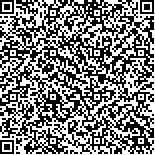下载中心
优秀审稿专家
优秀论文
相关链接
摘要

吸收性气溶胶指数AAI(Absorbing Aerosol Index)是基于卫星观测的紫外后向散射辐射导出的参数,与大气中对紫外线有吸收作用的气溶胶(简称吸收性气溶胶)有关,能够定性反应吸收性气溶胶的存在与空间分布特征。由于臭氧在AAI反演波段对紫外线仍然存在弱吸收作用,因此AAI可能与大气臭氧总量有关,臭氧反演的误差也可能对AAI的反演精度造成影响。为了研究臭氧总量与AAI的关系,臭氧反演的精度对AAI反演的影响,利用辐射传输模型通过敏感性实验,来模拟吸收性气溶胶指数和臭氧总量之间的关系,臭氧反演误差对吸收气溶胶指数的反演的影响。采用沙漠气溶胶,不改变气溶胶的含量,通过改变中纬度夏季的臭氧总量来计算大气模型。对臭氧总量、气溶胶含量与AAI的内在关系,臭氧总量对AAI反演精度的影响进行了模拟,模拟结果表明,气溶胶指数与臭氧总量的改变存在正相关关系,而臭氧总量的反演误差对AAI指数的反演影响不大。基于风云三号气象卫星紫外臭氧总量探测仪(FY-3/TOU)的臭氧总量和吸收性气溶胶指数数据(2012年),分析了青藏高原地区7月份臭氧总量与吸收性气溶胶指数空间分布特征的关系,与模拟结果一致。
The physical meaning of Absorbing Aerosol Index (AAI) is the spectral contrast at two ultraviolet (UV) wavelengths caused by absorbing aerosols; this contrast can be separated from other effects, including molecular Rayleigh scattering, surface reflection, gaseous absorption, and aerosol and cloud scattering. The AAI an indicate the presence of elevated absorbing aerosols; therefore, AAI based on space-borne backscattered UV instrument is a qualitative measure for atmospheric absorbing aerosols, such as desert and Black Carbon (BC) aerosols. The space-borne AAI data can be used for the study of spatial distribution and transport of absorbing aerosols, such as dust storm and environment pollution. Owing to the weak absorption of ozone in 331nm channel, such as the FY-3B Total Ozone Unit (TOU), a few relationships might exist between the AAI and the total column ozone. Thus, the AAI cannot completely separate the gaseous absorption effect from the aerosol absorption effect. The AAI is retrieved by comparing the measured backscattered UV radiances on top of the atmosphere and the UV radiances of pure molecular atmosphere, such as the Rayleigh scattering radiances, which is calculated by the radiative transfer model with the total column ozone as input. Hence, the retrieval of the AAI based on UV instruments might be affected by the uncertainty of ozone retrieval results. The radiative transfer model MODTRAN (MODerate resolution atmospheric TRANs mission) has been used to simulate the relationship between the AAI and the total column ozone, as well as the effect of ozone retrieval error on the retrieval of AAI. The simulation for the relation between the AAI and total column ozone is a sensitivity analysis process, in which the desert aerosol is adopted and the content of aerosol is fixed. The AAI is calculated by changing the total column ozone in the mid-latitude summer atmospheric model. The simulation results show that a 10% change of the total column ozone causes an approximately 15% change in the AAI. The effect of ozone uncertainty on the retrieval of the AAI is simulated through the calculation of the Rayleigh scattering radiance on top of the atmosphere by changing the total column ozone value in the mid-latitude summer atmosphere model. The results show that the AAI changes less than 1% with a 20% uncertainty in the total column ozone. The uncertainty of the total column ozone for FY-3/TOU is less than 5%, and the error of AAI caused by the ozone retrieval error is negligible. The AAI data of FY-3B/TOU for July of 2012 over the Taklimakan desert and Tibet Plateau are analyzed to verify the relationship between the AAI and the total column ozone, and the results show a remarkable correlation between the two. The conclusion cautions that using the AAI data of the spatial distribution of the total column must be considered in monitoring the absorbing aerosol process.

